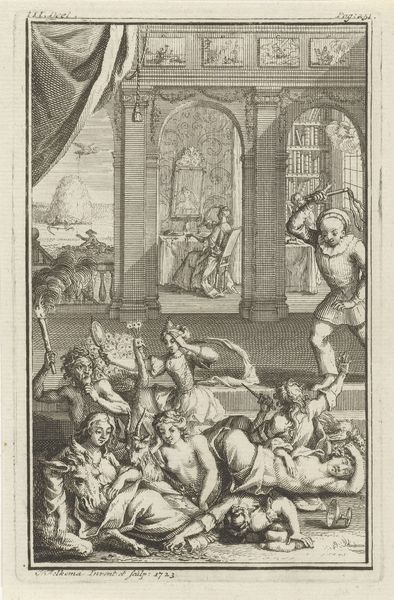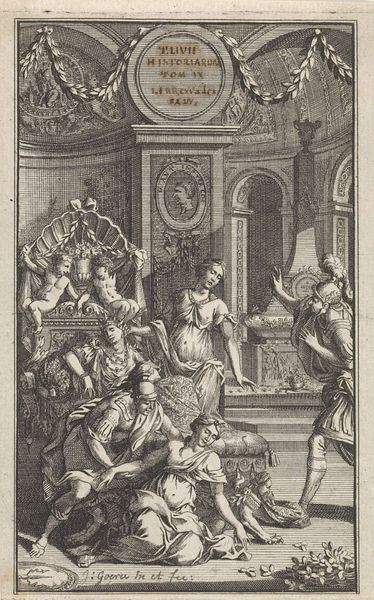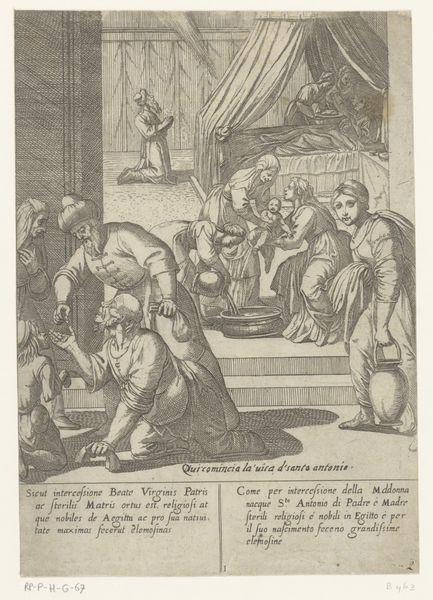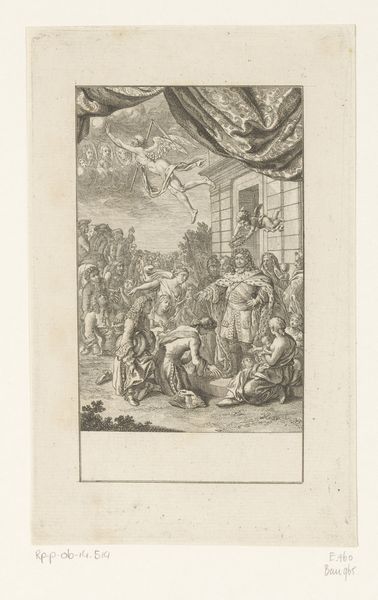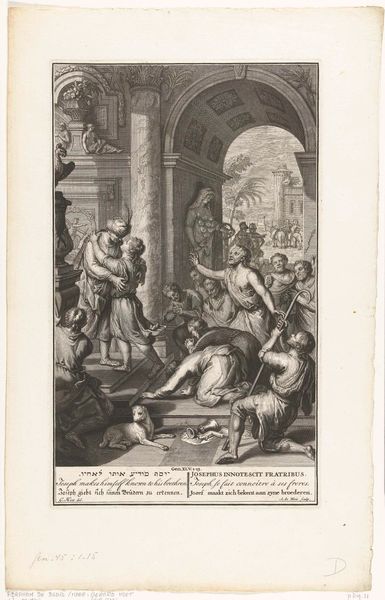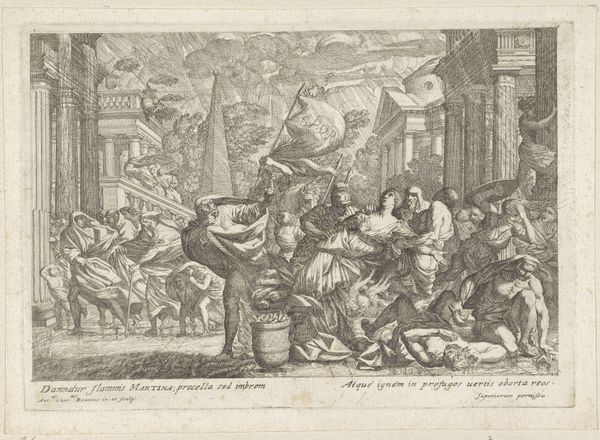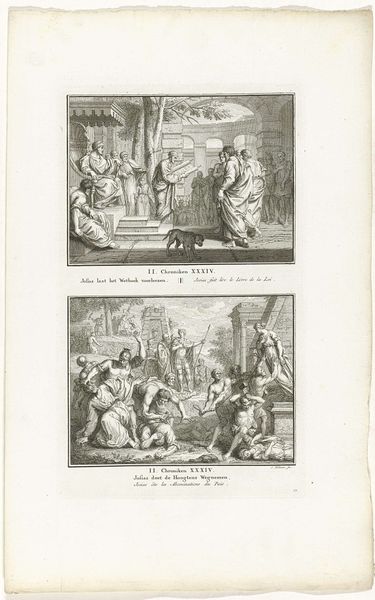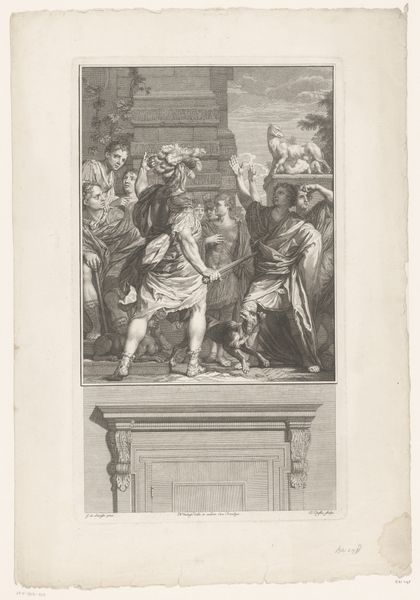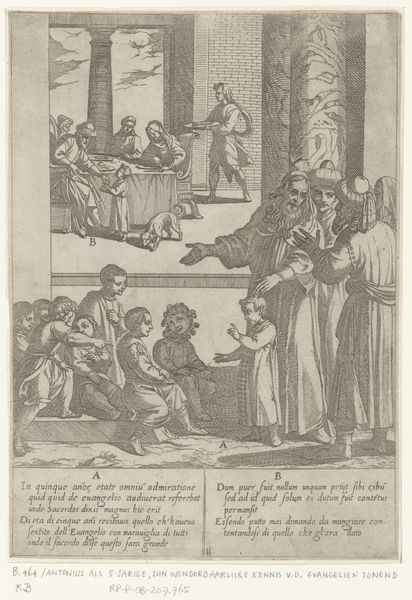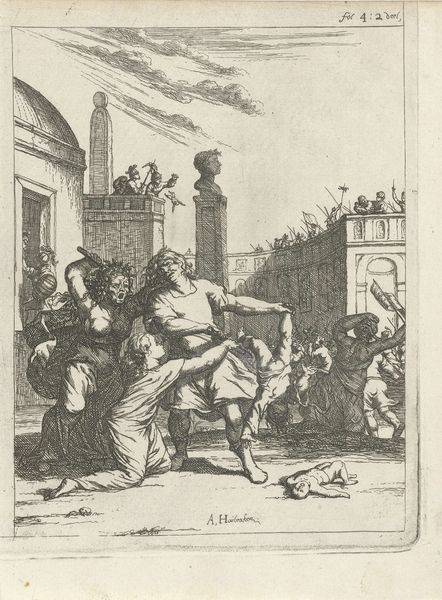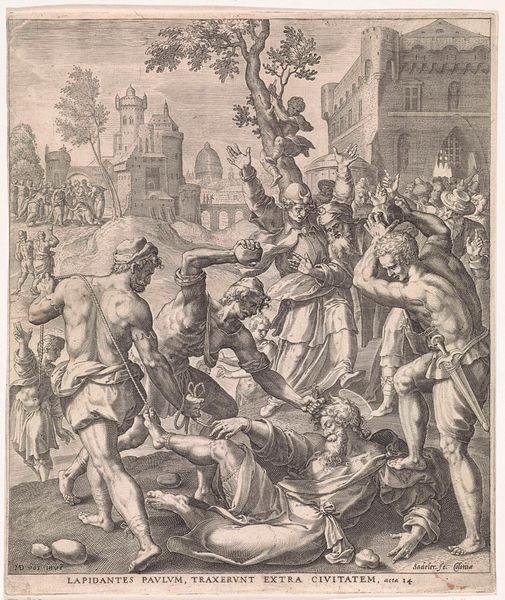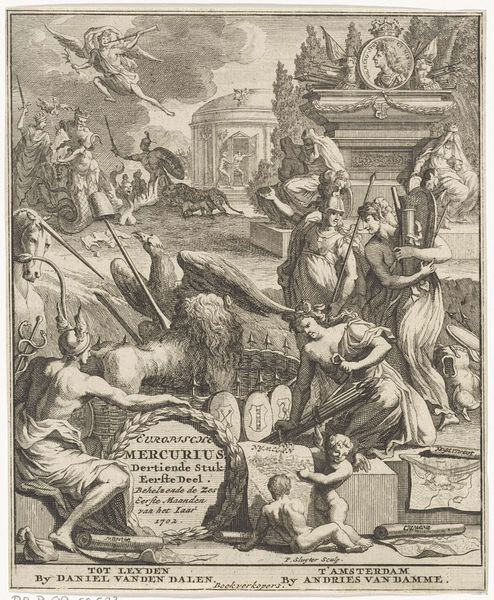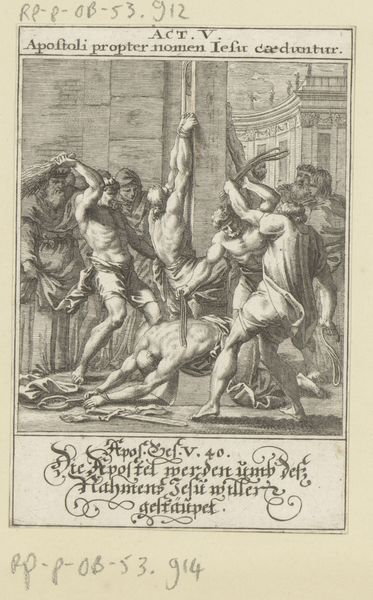
drawing, print, paper, engraving
#
drawing
#
baroque
# print
#
figuration
#
paper
#
history-painting
#
engraving
Dimensions: height 172 mm, width 89 mm
Copyright: Rijks Museum: Open Domain
Editor: This engraving by Jacques Philippe Le Bas from 1755, titled "Mentor and Telemachus Arrive at Salento as Idomeneus Prepares a Sacrifice to Jupiter," it's held at the Rijksmuseum. The Baroque style lends such drama, particularly in the gestures and the sacrifice scene itself. How should we interpret the role of the sacrifice within its historical context? Curator: Good question! Let’s think about what role the socio-political situation would play here. Consider the function of art in the 18th century. History painting, like this scene depicting Mentor and Telemachus from the *Odyssey*, was seen as instructive, providing moral examples and reinforcing existing power structures. Sacrifices were a pretty loaded topic at the time: public displays of devotion, but also assertions of political legitimacy, weren’t they? Editor: So, the sacrifice to Jupiter wasn't just about religious piety? Curator: Not solely. The narrative connects military success with divine favor. The image, reproduced and circulated widely, implicitly justifies military endeavors, maybe even colonial expansions, aligning them with a sense of historical destiny sanctioned by a higher power. Think about it: Who consumes such images and what socio-political function does the artwork accomplish? Editor: That reframes everything! I was initially focused on the figures and their classical robes, but now I see the engraving as actively participating in contemporary political discourse. Curator: Precisely! These images shaped public perception. Now when we think about art we think museums, galleries, public funding; consider that even this simple print had public function back in its day. We can consider the politics of imagery across historical periods. Editor: It’s amazing how much deeper the image becomes once you consider its political role. I definitely won't look at Baroque art the same way again. Curator: Indeed, the social and political currents profoundly influenced its production, reception and dissemination!
Comments
No comments
Be the first to comment and join the conversation on the ultimate creative platform.
